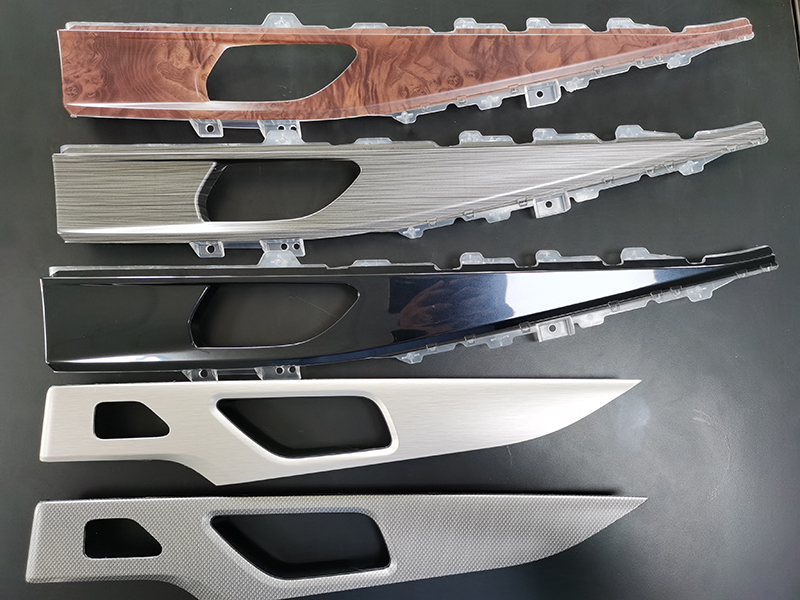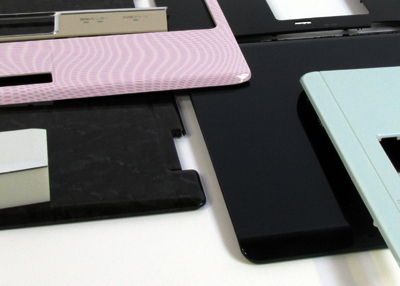Understanding In-Mold Decorations: Strategies, Patterns, and Finest Practices for Ideal Results
In the realm of manufacturing, the art of in-mold decors stands as an essential element of item layout and production. In-Mold Decorations. By diving right into the approaches, patterns, and finest practices that underpin successful in-mold design processes, organizations can open a world of opportunities that not just boost the aesthetic allure of their products yet likewise streamline production efficiency and boost consumer involvement.
Product Option
Material option is a crucial aspect of mastering in-mold decors, as it directly impacts the top quality and toughness of the end product. When selecting products for in-mold designs, it is vital to take into consideration aspects such as compatibility with the molding procedure, the desired aesthetic outcome, and the environmental conditions the product will certainly encounter. Thermoplastic products like abdominal, polypropylene, and polycarbonate are typically made use of for in-mold decorations as a result of their adaptability and capacity to attain detailed layouts. These materials offer superb moldability, enabling producers to produce complicated shapes and patterns with precision.
Moreover, the chosen material must possess excellent attachment homes to ensure that the design adheres firmly to the substratum during the molding procedure. Attachment in between the decor and the material is essential for stopping delamination and making sure durable aesthetic charm. Furthermore, materials with high warm resistance are preferred for in-mold decors, particularly for items that will be revealed to elevated temperatures throughout their lifecycle. By very carefully choosing the suitable material for in-mold decorations, producers can enhance the overall high quality and longevity of their items, fulfilling the assumptions of both clients and end-users.
Design Innovation
A vital consider progressing the area of in-mold designs is the constant expedition and application of design technology methods. Layout advancement plays an important duty in enhancing the aesthetic allure, capability, and general quality of products produced making use of in-mold design processes. By including cutting-edge design components, makers can differentiate their items in the market, draw in consumers, and stay ahead of rivals.
One of the vital aspects of design innovation in in-mold decorations is the assimilation of detailed patterns, structures, and graphics that were previously challenging to achieve with conventional design techniques. Advanced modern technologies such as 3D printing and electronic style devices enable designers to develop complicated and thorough layouts that can be flawlessly transferred onto molded components. Furthermore, using dynamic shades, metal surfaces, and unique results like gloss or matte structures can additionally raise the visual charm of in-mold decorated products.
In addition, layout technology expands beyond aesthetics to include functional enhancements such as ergonomic forms, integrated features, and personalized aspects that satisfy specific user needs. By accepting layout development, manufacturers can open brand-new opportunities for imagination, item, and personalization distinction in the affordable landscape of in-mold decors.
Production Efficiency
Reliable production procedures are essential for equating the cutting-edge layouts established in the field of in-mold decors into high-grade finished items that meet market needs and customer assumptions. In the realm of in-mold decors, production efficiency incorporates numerous vital elements that contribute to the total success of the manufacturing procedure.
In addition, executing automation and robotics in the assembly line can considerably enhance effectiveness by simplifying recurring jobs and minimizing the margin of error. Automation not just speeds up the production process yet also improves accuracy and repeatability, causing a much more premium and consistent final product. Embracing lean manufacturing concepts, such as just-in-time supply management and waste reduction strategies, can even more improve production effectiveness by reducing downtime and enhancing source use. Generally, an alternative approach to manufacturing effectiveness is critical in making best use of the potential of in-mold decoration strategies and attaining optimum lead to the open market landscape.
Quality Assurance Procedures
What are the essential methods for ensuring stringent high quality control steps in the world of in-mold designs? Quality assurance steps are extremely important in in-mold design procedures to make sure the production of remarkable and high-quality finished items. One crucial method is the execution of rigorous evaluation methods at every stage of the manufacturing process. This involves performing comprehensive aesthetic inspections, dimensional checks, and shade uniformity analyses to identify any disparities or flaws at an early stage.
Utilizing advanced innovations such as automatic assessment systems can additionally improve the quality assurance process by giving exact and reliable data for analysis. These systems can discover imperfections that may be missed by hand-operated assessments, consequently enhancing general item top quality and consistency.

Regular training and growth programs for staff members associated with the in-mold design procedure can also add to preserving premium criteria. By educating staff on finest practices, quality assumptions, and the importance of attention to his comment is here information, firms can cultivate a culture of quality awareness throughout the company.
Consumer Allure
To enhance the bankability of in-mold decor items, providing and recognizing to customer preferences play a vital function in determining their charm and success. Providing modification choices such as individualized designs, shade variations, and textural aspects can significantly enhance the allure of in-mold decor items.

Final Thought
In-mold decors supply a efficient and versatile way to improve product appearances. By very carefully selecting products, embracing ingenious layouts, enhancing manufacturing processes, applying high quality control actions, and prioritizing customer allure, suppliers can achieve optimal results. It is important for companies to continuously adjust and enhance their techniques to stay affordable on the market. In-Mold Decorations. Grasping in-mold decors calls for an alternative approach that considers all elements of the manufacturing procedure to make certain success.
In the world of production, the art of in-mold decorations stands as a pivotal element of product layout and manufacturing. Style advancement plays a vital role in improving the aesthetic charm, capability, and general quality of products manufactured making use of in-mold design procedures.One of the key facets of design development in in-mold decorations is the look what i found assimilation of intricate patterns, appearances, and graphics that were formerly testing to attain with typical decor techniques.Efficient production procedures are essential for equating the ingenious designs established in the field of in-mold designs into high-quality finished products that meet market needs and consumer assumptions. Providing modification options such as personalized layouts, shade variations, and textural aspects can considerably improve the allure of in-mold design products.
Comments on “The Evolution of In-Mold Decorations in Production Processes”